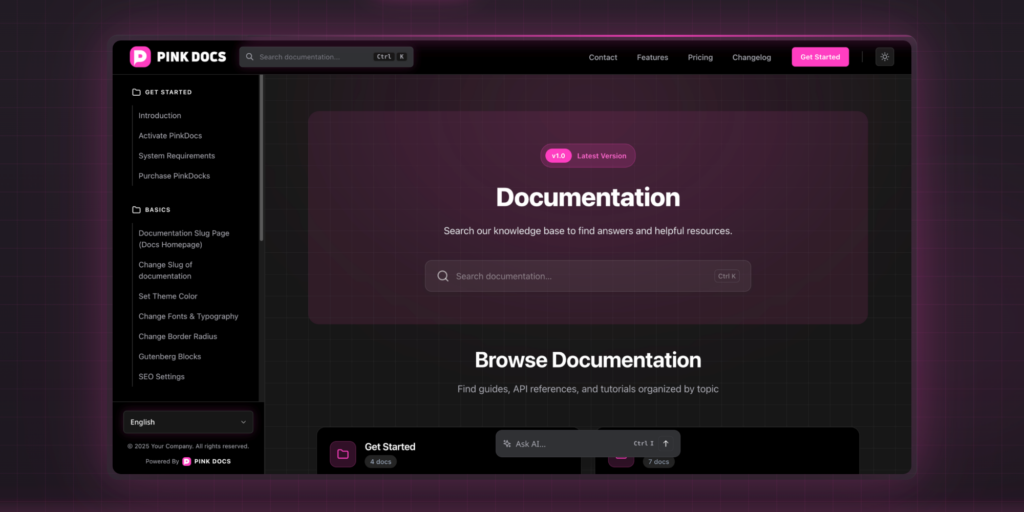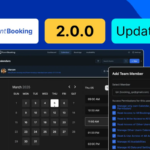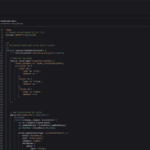Curated blog with news, events, listings, jobs and exciting stories about web design & web development.

How To Fix Five Common WordPress Problems
WordPress is like life itself. The beginnings are incredibly beautiful. Discover a new project, fantasize about the possibilities it offers, make sketches of the design, choose and create the content to upload to the web…
And although WordPress is (and will be for many years) probably the ideal solution for your web project (or the vast majority of them), it may have its share of cons. With each new release, errors continue to get common. Here’s an interesting fact: all WordPress releases are named after jazz musicians. Groovy indeed!
Common WordPress Problems

Whether you are a WordPress implementer or someone who is going to create a WordPress website by yourself, in this article you will find the most common problems in WordPress with which – if you have not already done so – you will find yourself at some point in your project.
1. 500 Internal Server Error
One day you wake up so happy, and you are going to edit your website and wing! You encounter this ugly issue. This error is more common than you think and don’t worry, because your website is still there, in the cloud, on the Internet. You have not lost it.
Why does this happen?
This fault is a failure (or usually) of the server (of your hosting). It is produced because you have a corrupt file in the root of your web (the folder where it is hosted). This corrupt file causes the communication between the files on your website to be broken and the way in which the server “shows” it to the end-user.
This file is usually that of .htaccess, although it can also be caused by a failure in the limit of PHP memory used by your server.
Solution
The most sensible way to see where this error lies is by putting WordPress in debug mode and to activate this function, and you will have to add (via the code editor and FTP), in the wp-config.php file (also in the root ) this line: define ('WP_DEBUG', true)
Once you have done this, go to where the .htaccess file is located and rename it in a different way, so that the server does not take it into account (for example, call it .htaccess-original).
Save everything, and re-enter your website in the normal way (refreshing the tab where you have it with the 500 error for example). Hopefully, the problem was in that corrupt file, and you will have regenerated a new one that works well.
What you have to do if that was the error, is to go to the permalinks in Settings > Permalink Should and save the configuration without touching anything.
If it was not the solution, debug mode will be telling you the error which may be a PHP memory problem. In this case you have to increase it from the wp-config.php file, adding, for example, this line: define ('WP_MAX_MEMORY_LIMIT', '256M');
If you still have not solved the problem, we advise you to do something that is very common in WordPress errors:
Rename the plugins folder to another name. You’ll find it via FTP in wp-content > plugins and refresh your site. You’ll then see that many things are not like before, but at least it may have let you in to see it.
In that case, go activating the plugins one by one (after renaming the folder in its original form). When you activate one, and your site returns an Error 500, you will have found the plugin that generates the conflict.
Additionally, always work with a reliable hosting service like The WP Help to prevent these errors from occurring.
2. Syntax Error
Without wishing to return to the language review classes where we analyze the syntactic form of Spanish, this “syntactic” error has nothing to do with it. But what it has to do with is that the word “syntax” defines some kind of read error or understanding. Something that does not fit within a specific part of the code.
Why does this happen?
What happens in this case is that when the files on your website have been loaded in a matter of thousandths of a second, to be shown to the end-user, one of them, in a certain line of code, has given an error, either because the code is misspelled, or because part of the code is missing.
That is why in the error message itself it will tell you where you need to find the solution to the problem.
Solution
The most consistent way to solve this problem is to go to the file mentioned in the question, and to the line it indicates, and see what it is, e.g. review the file functions.php on line 548. The line number is easy to see if you use a code editor like the one mentioned above. Obviously, you will have to have some other level of PHP knowledge, but nothing that cannot be solved with a good Google search.

3. White Screen of Death (WSoD)
This error that sounds like a movie is nothing more and nothing less than the famous “blank screen” that some WordPress sites suffer in silence. As a blank screen, we mean that literally: a blank screen.
Why does this happen?
There may be many reasons behind this error, but the most common is an incompatibility of any template or plugin you are using.
If you have purchased your template in a ThemeForest-type site and the plugins included in the template have not been updated in a while, these plugins may be in older versions and need to be updated. The theme or template itself may also be in conflict with the most recent version of the WordPress core.
Solution
The first thing you can do is re-install the WordPress plugin template. Don’t worry, the data in the database will not be lost, but make a backup copy just in case.
If you download the template again, in the aforementioned example, ThemeForest, with a bit of luck its author will have uploaded new versions of that template, with updated plugin versions.
If this does not work for you, do what we have mentioned in the previous error: deactivate the folder of the plugins in the FTP, and activating one by one, until you find the conflicting one. Also try changing templates momentarily, to see if the problem lies there. Remember that you always have to use a child theme with any template. Never directly work with the “mother” template.
4. Are you sure you want to do this?
It’s as if WordPress is super nice to you, and asks you if you really want to do what you want to do; as if he cared for you, and tried to stop you before it was too late. This is a common WordPress home page error.
Why does this happen?
It does not define you exactly what is the reason or why it appears. What has been shown is that most of the time, the unique keys used in the wp-config.php file influence this error. But before “touching” these keys, first, we advise you to do something else that we mention next.
Solution
The main solution is to deactivate the plugins and activate them one by one, to see which one conflicts. The same with the template you use. Turn it off momentarily to see if it is the cause of the problem.
If you are still facing these issues, you will have to go one step further and reinstall the original WordPress files. However, it does not mean you have to delete plugin or anything, just everything that is not the folder wp-content.
Also remember to reconnect the database in the new wp-config.php file. You can copy the contents of the previous file, but without the Keys and Salts, which is what is supposed to cause that error. At this point, the error should have been corrected.
5. Error establishing a database connection
If the 500 mistake was ugly, this one is even uglier. You enter your website, and you find a phrase that tells you I don’t know what about the database. You cannot enter wp-admin, and the world is coming up because “it is the database”, and all the web content is stored there!
Why does this happen?
Don’t despair. It happens because the communication between the database and the WordPress wp-config.php file has been broken.
When WordPress is installed for the first time (and you do not use an automatic installer), you must enter a database name, server name, username and password for the database you are going to use.
What WordPress does is dump all its default tables in that database, and prepare it to “receive” new content, which will show you and your visits in the future, whenever necessary.
Solution
Just check the information and keys on the database that appears in wp-config.php. You can use FTP or the cPanel file explorer. If the data is correct, the database may have reached its maximum capacity, causing the error (since there is no more, it cannot show more). Get in touch with your hosting provider to solve this limitation, and the problem will be solved.
Concluding the aforementioned, these errors are always due to the same causes, whether they are a WordPress security issue or a simple bug. Although WordPress is very capable of creating almost any type of website, it is not a perfect machine, and at some point, some types of errors may occur. Not to worry though, for every problem – there’s always a solution!
Biff Codes - The Job Board for WordPress Devs
Biff.codes is on a mission to revolutionize job boards. Post and find WordPress developer jobs for free.
FTC Disclosure: We may receive a payment in connection with purchases of products or services featured in this post.







Add your first comment to this post